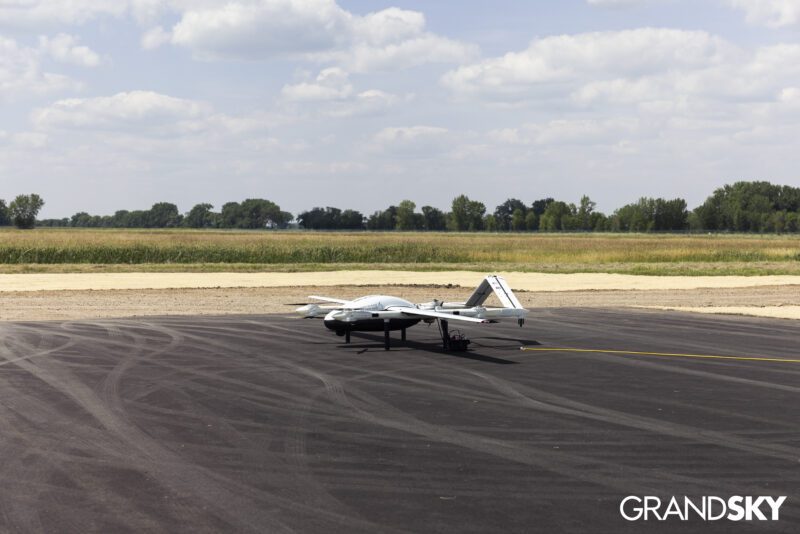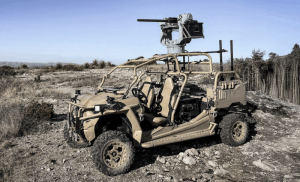Project ULTRA’s $100M Funding Boost and Weekly Cargo Drone Flights: A Milestone in Military and Civil Logistics
This July marked a notable event in the drone industry as Project ULTRA secured a substantial $100 million contract expansion and initiated weekly drone cargo flights between key US military bases in North Dakota. This development represents a significant shift, impacting aerospace logistics, medical delivery, and potentially future drone regulations.
What Is Project ULTRA and Why Does It Matter?
Project ULTRA (UAS Logistics Traffic Response Autonomy) is an ambitious endeavor led by the US Department of Defense and North Dakota organizations like GrandSKY, Grand Forks County, alongside private innovators. Its mission is to develop autonomous cargo drone operations under real-world, military-grade conditions to swiftly and safely transport essential supplies, extending its utility to rural healthcare, disaster relief, and more.
The Latest Breakthroughs: From Sim to Sky
$100 Million Contract Expansion
Supported by Senator John Hoeven and the US Senate Defense Appropriations Committee, Project ULTRA’s contract value soared from $18 million to an impressive $100 million in July 2025. This funding propels research, development, and operations, deepening private sector partnerships.
Weekly Uncrewed Cargo Drone Flights
Project ULTRA commenced weekly drone flights transporting up to 25 pounds between Grand Forks Air Force Base and Cavalier Space Force Station, over a 60-mile route across the National Airspace System (NAS). Noteworthy achievements include:
- First U.S. military bases to transport cargo across NAS by drone without a chase plane.
- Completion of 24 successful BVLOS flights, including ten 100-nautical-mile sorties.
- Conducted medical “blood flights” simulating vital medical supply deliveries, essential for future rural healthcare support.
According to Project ULTRA Director, retired Navy Cmdr. Chris Hewlett, the project required significant coordination to execute. He emphasized the project’s intention of demonstrating sustainable, repeatable, and scalable operations.
Technology Behind the Operation
The Drones: Robust, Made for Military Logistics
Project ULTRA deploys Skyways V2.6 and V3.0 UAS platforms, noted for:
- Payload capacity of up to 55 lbs, suitable for medical and essential supplies.
- A range exceeding 100 km, enduring North Dakota’s harsh weather.
- BVLOS capability ensuring operations beyond visual line of sight, essential yet tightly regulated.
Tackling Airspace Integration
Project ULTRA flights navigate through civilian-controlled NAS requiring:
- Coordination with FAA, air traffic control, and local stakeholders.
- Utilizing emerging Uncrewed Traffic Management (UTM) systems for airspace safety.
- Setting a model for urban air mobility, showcasing safe integration with manned aircraft.
Human Impact: Military, Rural, and More
Military Resupply and Readiness
The project sets a new benchmark for military base resupply by drone, offering rapid delivery of critical items without endangering crew or consuming fuel on manned missions.
Healthcare and Rural Logistics
The “blood flights” highlight potential benefits for:
- Rural hospitals acquiring necessary shipments swiftly.
- Delivering supplies in battlefield or disaster scenarios when roads are impassable.
Thomas Swoyer Jr., GrandSKY President, emphasized the burgeoning use of UAS in rural healthcare, translating lessons from battlefield support to civilian needs.
Expanding Civilian Partnerships
Project ULTRA exemplifies effective public-private collaboration, involving diverse partners from UAS software startups to airspace safety firms and academia.
Fast Facts & Fun Stats
- Payload capacity: 25 lbs, expanding to 55 lbs.
- Route: 60+ miles from Grand Forks AFB to Cavalier SFS.
- 24 successful BVLOS missions, aiming for consistent weekly flights.
- $100M funding, one of the largest US drone logistics projects.
- Pioneering operations in NAS without a chase plane.
Why This Matters for the Drone Sector
Breaking Regulatory Barriers
Each ULTRA flight advances FAA waivers and commercial drone licensing, contributing vital data for safer civilian uses like large-payload deliveries.
Inspiring the Next Generation
Projects like ULTRA inspire and attract future talent in the drone industry, fostering creativity and interest through large-scale initiatives.
The Human Side & Culture
Project ULTRA’s success hinges on people and partnerships:
- Teamwork involving engineers, military, and private experts.
- Feedback from stakeholders ensuring safety and reliability.
- Community engagement in North Dakota nurturing future innovation through education and pilot programs.
Looking Forward: What’s Next for Project ULTRA?
- Scaling operations with the $100M boost for expanded research and development.
- Transitioning successful demos into commercial drone corridors for various uses.
- Building towards autonomous, scalable drones for widespread applications.
Expert Tips, Common Questions, and Useful Takeaways
Organizations can learn from ULTRA by:
- Building partnerships across different sectors.
- Prioritizing safety and compliance with stringent air traffic regulations.
- Pursuing correct operational pathways like BVLOS in NAS.
- Planning for scalable operations from initial demos.
Quick FAQs
- Civilians will benefit from advancements in logistics and safety.
- ULTRA drones are currently for military/government use but inspire future civilian models.
- Each flight paves the way for enhanced FAA regulations and approvals.
Join the drone revolution by following Project ULTRA’s groundbreaking work.
For more information, visit Original Article.













